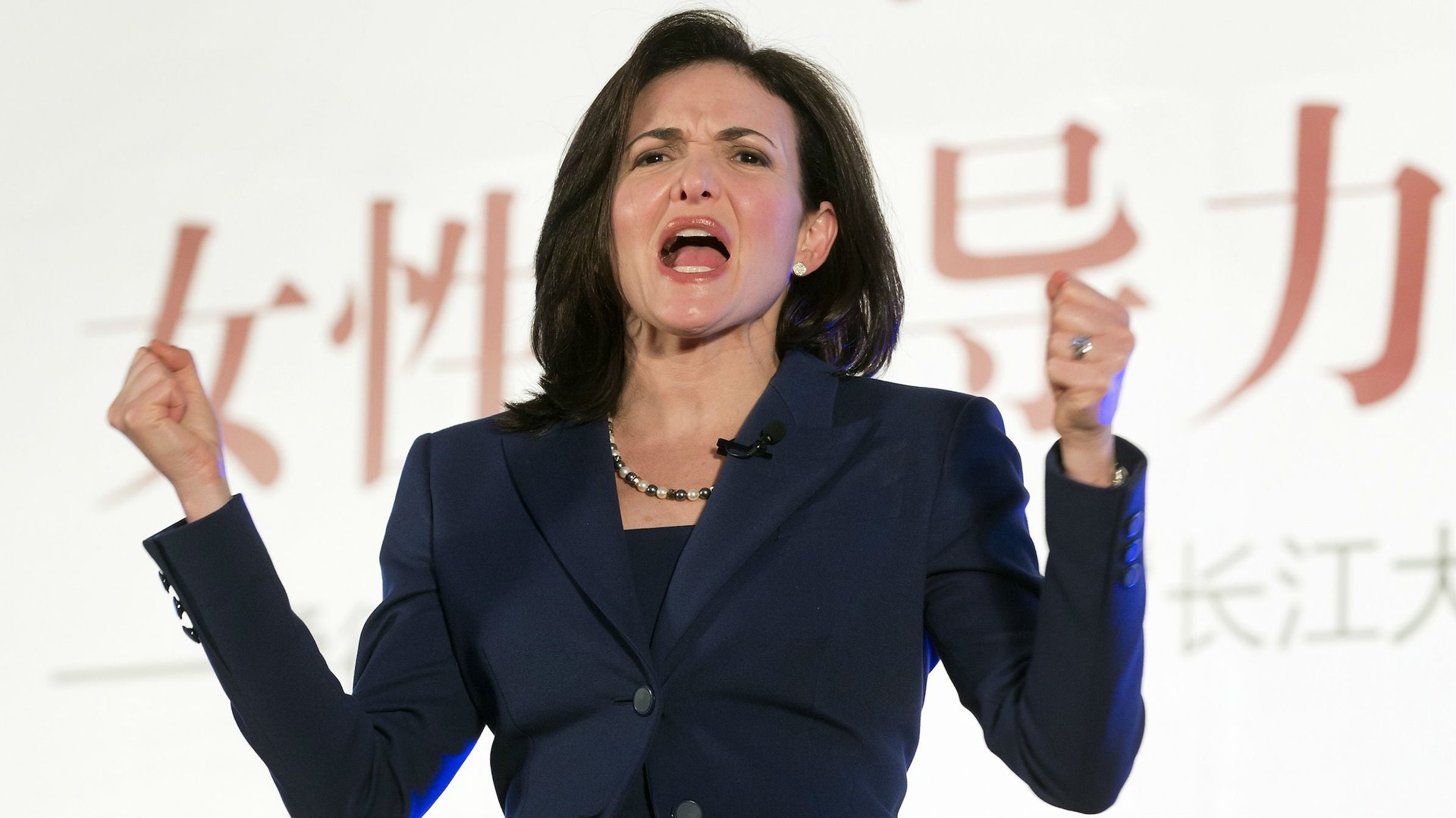Why Sheryl Sandberg’s “Lean In” doesn’t translate in China
This item has been corrected.


This item has been corrected.
Sheryl Sandberg is doing a pretty good job of getting her message across to professional women in China. Her book Lean In: Women, Work, and the Will to Lead has sold over 100,000 copies since its Chinese translation was released in June. Top universities in China are holding “Lean In” discussions for young women, and men too. Sandberg, speaking to audiences of thousands in Beijing and at the World Economic Forum in Dalian, called on more women to be leaders in China and told Chinese men to do more housework.
“We’ll never achieve balance in the workforce until we achieve equality at home. In every country women do more child care and housework,” she told students at Peking University in Beijing on Sept. 12. “We’ll never get women to be treated equally with equal opportunity at work if there is no equal responsibility at home.”
But Chinese women are getting increasingly conflicting messages these days. At the same conference in Dalian, executive Jiang Xipei, head of Jiangsu Far East Holding, an electrical equipment supplier, offered a message completely counter to Sandberg’s. “There must still be division of labor, with men working outside and women at home supporting the family,” he said. “Women, the career of your husband must be seen as your career.”
This is the sentiment that Chinese women hear the most. Carrie Huang, a 21-year-old finance student who organized a Lean In discussion at Renmin University in Beijing said, ”It has to do with our education and background. Our parents tell us, ‘You are girls, get yourself a stable life and don’t have too much ambition.” Another young female professional, a graphic designer whose comments about Lean In were posted online, said Chinese women are still brought up to believe that their goal in life is finding a husband. “Chinese parents tell their daughters to find a man who can care for them,” she writes.
Mao Zedong once called on women to “hold up half the sky.” Since then, China has become home to some of the world’s wealthiest women entrepreneurs who have made their fortunes on the country’s economic expansion via real estate, exports, finance and other industries. By some estimates, 70% of Chinese women work. As more women go to school—an unexpected benefit of the one-child policy that prompts parents to spend more on their daughters—young Chinese women are beating their male peers in university entrance exams. And, more women are putting off marriage. In 1982, only 5% of women in their late twenties were single; as of last year that figure has risen to 27%.
Still, in the post-Mao era, women’s place at the top has become tenuous. The pay gap has widened. According to the All China Women’s Federation, urban Chinese women earned 67% of what their male counterparts did in 2010, compared to 78% in 1990. The percentage of women on corporate boards, 32% in 2011 is lower than it was in 2005, according to the same group. Some reasons for the widening disparity: women tend to work in lower paying jobs, often in the informal economy and many women take off from work in their thirties to focus on raising a family. Last year, the country’s ranking on a gender equality index by the World Economic Forum fell to 69 from 57 (pdf) in 2008.
Today women in China play a small role in elite politics—they make up only 4.9% of the latest Central Committee of the communist party, down from 7.6% in 1969. This matters because China’s communist bureaucracy plays such a big role in China’s business community. Without women at the top, no wonder female professionals have a harder time building guanxi, personal connections important to doing business in China.
It’s fitting that Sandberg’s Lean In suffers from a translation problem. The title in Chinese is “Take One Step Forward,” which connotes achieving some progress rather than building on existing success.
Correction (Sept. 19): An earlier version of this article incorrectly described Jiang Xipei, head of Jiangsu Far East Holding as a “successful female executive.”